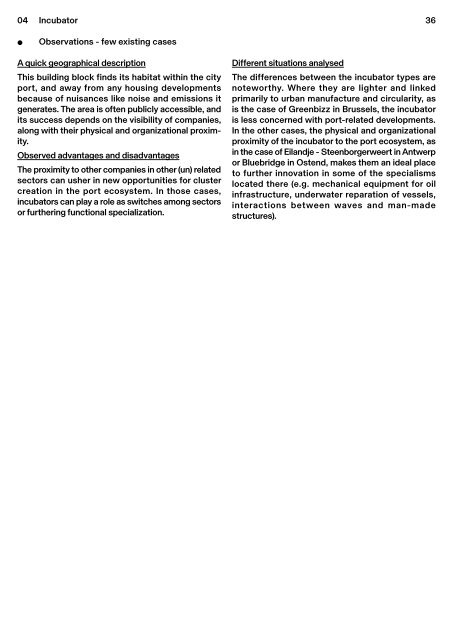Circular (City) Ports_Workbook 2_ Buildings Blocks
Create successful ePaper yourself
Turn your PDF publications into a flip-book with our unique Google optimized e-Paper software.
04 Incubator<br />
36<br />
●<br />
Observations - few existing cases<br />
A quick geographical description<br />
This building block finds its habitat within the city<br />
port, and away from any housing developments<br />
because of nuisances like noise and emissions it<br />
generates. The area is often publicly accessible, and<br />
its success depends on the visibility of companies,<br />
along with their physical and organizational proximity.<br />
Observed advantages and disadvantages<br />
The proximity to other companies in other (un) related<br />
sectors can usher in new opportunities for cluster<br />
creation in the port ecosystem. In those cases,<br />
incubators can play a role as switches among sectors<br />
or furthering functional specialization.<br />
Different situations analysed<br />
The differences between the incubator types are<br />
noteworthy. Where they are lighter and linked<br />
primarily to urban manufacture and circularity, as<br />
is the case of Greenbizz in Brussels, the incubator<br />
is less concerned with port-related developments.<br />
In the other cases, the physical and organizational<br />
proximity of the incubator to the port ecosystem, as<br />
in the case of Eilandje - Steenborgerweert in Antwerp<br />
or Bluebridge in Ostend, makes them an ideal place<br />
to further innovation in some of the specialisms<br />
located there (e.g. mechanical equipment for oil<br />
infrastructure, underwater reparation of vessels,<br />
interactions between waves and man-made<br />
structures).


















